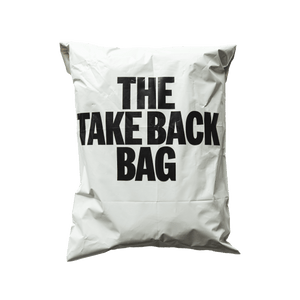rPET is the process of breaking down used plastics into pellets, and then melting them into threads that can be used for apparel production. It’s a good solution that makes good use of recycled plastics, but it isn’t perfect. Here’s what to know.
Why does Arvin use rPET fibers?
rPET is the process of breaking down and reusing PET plastics for other uses. PET plastics (the most common plastics) are highly recyclable, and can be broken down to create useful, durable synthetic fibers for socks and apparel.
Using rPET produced fibers allows us to avoid using net-new produced synthetic fibers, and helps keep plastic waste from entering landfills. Because synthetic fibers are a must for sock production—they’re what keeps them supportive and fitted through their lifecycle.
rPET produced fibers are a great solution—but it isn’t a perfect fix. Everytime any piece of apparel with synthetic fiber is washed, it releases micro-plastics into the water via your washing machine. These microplastics will eventually pollute surrounding water sources, and harm the fauna that live within those waterways.
Because of this, we highly recommend washing any and all of your synthetic apparel in a guppy bag. Guppy bags prevent the release of microplastics, and are really easy to use.
Lastly, the rPET process is not 100% zero-emission or resource dependent. The process of breaking down recycled PET plastics into pellets and melting them into fibres requires significant amounts of heat, energy, and CO2 emissions.
The rPET Process
It all begins with post-consumer plastic bottles and other PET plastic products. When those get recycled properly, facilities can then shred those PET plastics into rPET flakes or pellets. Then, the facility will crush and melt those pellets into a new material that can be spun into threads and fibers for polyester fabrics for apparel production. We take those recycled polyester threads, and combine them with our own materials to create fresh socks that fit really, really well.
Our Materials
We use the most responsible products possible, and invest in new solutions as they arise to reduce our impact that much further. Every material we use is the best there currently is—but we’d be sugarcoating things if we said they were all perfect. Here’s an overview of what we currently use.











